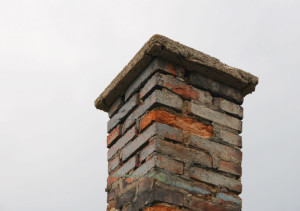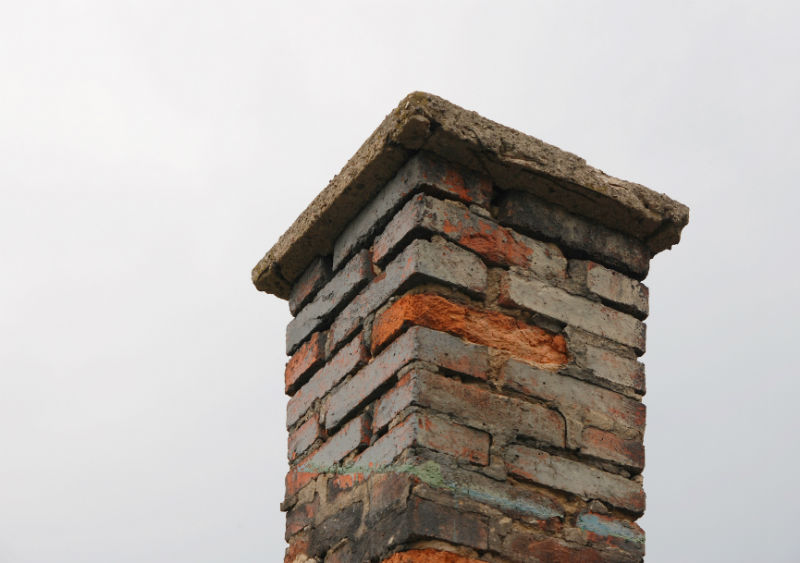An annual professional chimney inspection is recommended by many national fire safety groups, and scheduling this important chimney maintenance task after winter will determine if your chimney suffered any winter weather damage. Cold temperatures can be very harsh to chimneys, and a lot of damage can occur that may make your fireplace unsafe to use. The longer this damage is neglected, the more deterioration can happen. At Blue Ridge Chimney Services, safety is one of our top priorities, and we know that the combination of freezing winter weather and using your fireplace everyday for a few months can lead to a couple of situations that can threaten the safety of your chimney. We would like to tell you why a post-winter chimney inspection is so important.
Your chimney will be inspected for spalling damage.
When you have a masonry chimney, the Chimney Safety Institute of America (CSIA) says that water is its greatest enemy, especially in the winter. The bricks and mortar of your chimney are very absorbent, and even if you do not have a water leak in your chimney, water still gets trapped in those masonry materials. Why is the winter season such a dangerous time for your chimney? That water trapped inside your bricks and mortar will freeze and expand when the temperature drops. As the weather gets warmer and the water thaws, it causes the bricks and mortar joints to crack and break apart. This is what we call spalling damage. After repeated cycles of freezing spells, your chimney could end up with loose and missing bricks. If you do not have this damage repaired, it can lead to the collapse of the structure of your chimney. Our CSIA-certified chimney technicians can identify any spalling damage to your chimney and make recommendations to repair it to make your chimney sound and safe to use.
Your chimney will be inspected for large accumulations of creosote.
Creosote is a natural compound that forms during the combustion process of burning wood. Varying in appearance and color, creosote can be black or brown, sticky and gummy, hard and shiny, or brittle and crispy. No matter what it looks like, creosote is very flammable and is the main cause of chimney fires, according to the CSIA. Over the winter, creosote sticks to the inner walls of your chimney and accumulates in large deposits. If the internal temperature of your chimney gets hot enough, these creosote deposits can easily ignite a chimney fire. Blue Ridge Chimney Services will examine the inside of your chimney to see how much creosote has accumulated on your inner chimney walls, and then our CSIA-certified chimney sweeps can remove every bit of creosote by professionally cleaning your chimney. We will also ensure nothing else is blocking the flue to reduce hazards, including carbon monoxide leaks.
Don’t procrastinate scheduling your appointment for an annual chimney inspection. Contact us at Blue Ridge Chimney Services to arrange a visit from our CSIA-certified chimney experts.

